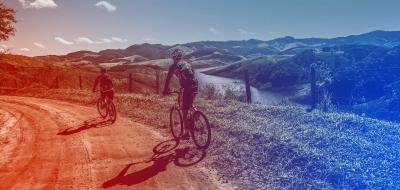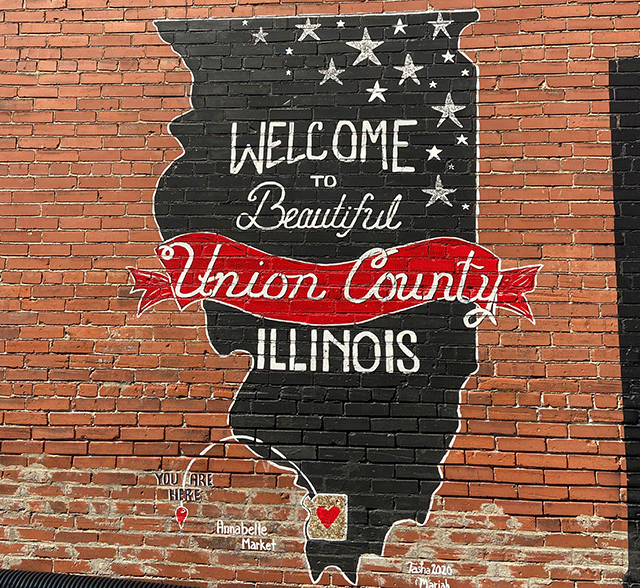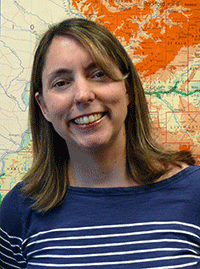
ORPR Is Building Bridges
RST E-News October 2021

Union County is one of five southern Illinois counties that will benefit from the CREATE Bridges initiative.
In 2001, Dr. Laura Payne left a position in the School of Exercise, Leisure, and Sport at Kent State University to join RST as an assistant professor and Extension Specialist. She succeeded Dr. James Brademas, who had just retired. Dr. Brademas had been a leader in the Office of Park and Recreation Resources (ORPR), RST’s outreach unit, and directed the award-winning Illinois Rural Recreation Development Project.
 The appointment with Illinois Extension was important to Dr. Payne, and has remained so throughout her 20-year career at Illinois. She now serves as director of ORPR, which according to its website, is “…taking the theory and research out of the labs and classrooms and applying them to the world outside of the university” in order to “positively impact people’s lives.”
The appointment with Illinois Extension was important to Dr. Payne, and has remained so throughout her 20-year career at Illinois. She now serves as director of ORPR, which according to its website, is “…taking the theory and research out of the labs and classrooms and applying them to the world outside of the university” in order to “positively impact people’s lives.”
ORPR was formed in 1966 through a merger between the Field Service of the Department of Recreation and Park Administration and the Rural Recreation Section of the Cooperative Extension Service. Dr. Joe Bannon led the newly merged unit, which grew quickly to meet the demand for assistance with recreation and park planning and research. Its founders recognized then that having access to a variety of appealing leisure activities not only contributes significantly to the health, well-being, and quality of life enjoyed by individuals and families, but also factors into the economic, social, and environmental health of communities. It is a perspective that continues to guide ORPR’s work.
One can see this perspective evidenced in the projects taken on by ORPR. One recent example is CREATE Bridges, an Extension-led initiative in southwest Illinois that aims to enhance rural communities. Dr. Payne says her membership on the Community and Economic Development team within Illinois Extension led to ORPR’s involvement.
“There is an abundance of outdoor recreation in southern Illinois, but you have to offer residents and visitors other things to do as well,” she said. “It’s important to retaining businesses and attracting new ones, as well as to retaining and growing the population. You have to offer access to attractions and activities that make communities good places to work, live, and play.”
Outmigration, or the loss of residents, is a serious issue for southern Illinois, Dr. Payne continued. “Alexander County lost almost 2,500 people between 2010 and 2019,” she said. “For an area that only had about 8,000 residents to begin with, that’s a significant population loss.” In addition to Alexander County, the four other counties targeted by CREATE Bridges—Johnson, Massac, Pulaski, and Union—have many historical and culturally significant sites for tourism. The goal, Dr. Payne said, is to get community leaders and others working together to promote and strengthen the assets—for example, economic, environmental, and community assets—that build healthy communities. Opportunities for recreation and leisure are an important part of those assets.
Other recent projects
Over the last 15 years or so, ORPR has helped the Illinois Department of Natural Resources (IDNR) compile its Statewide Comprehensive Outdoor Recreation Plan (SCORP) by conducting one of the surveys, of outdoor recreation facilities, that provided data for the plan. For the latest iteration, the 2021-2025 SCORP, ORPR conducted both the survey of outdoor recreation facilities and outdoor recreation participation, analyzed the data, identified priorities, and recommended an implementation plan.
“We worked with the Illinois Department of Natural Resources to modernize SCORP and make it an actionable strategic plan that reflects best practice and is useful,” Dr. Payne said. She was able to involve graduate students in the process, giving them invaluable professional experience.
In addition, ORPR conducted a study for the Illinois Park and Recreation Association that assessed how agencies adapted to COVID. Throughout the State of Illinois and across the country, parks and natural areas have been heavily used during the pandemic, which created challenges.
“For one thing, we had to figure out how to maintain the parks and prevent them from being loved too much and manage them in a way that keeps people safe,” Dr. Payne said. Another big challenge has been to the revenue streams of park and recreation agencies, which supplement monies provided by tax levies with program fees and facility rentals. Both of these sources have largely dried up during the pandemic. She presented ORPR’s findings during a presentation for the IPRA’s Learning Lab webinar series.
ORPR also recently began a study with the Prospect Heights Park District that will help the district decide whether to remodel or replace their recreation center and outdoor pool. In another project, ORPR is developing a program module focused on keeping loved ones socially engaged and involved in valued leisure and recreation activities for Adult Children of Aging Parents (ACAP), a nonprofit organization based in North Carolina that is expanding nationwide.
In November, ORPR will engage in strategic planning of its own, bringing together stakeholders in Extension, park and recreation agencies, tourism bureaus, and others to revisit its mission and vision and establish goals for the next two to four years.
“We want ORPR to reflect the whole department,” Dr. Payne said. “In addition to continuing our focus on parks and recreation, we want to emphasize the links among recreation, sport, and tourism. And it’s important that we have diverse voices that contribute to our strategic plan because we don’t want to be limited by our own small group’s viewpoints.”
Picking up on the theme of creating bridges, Dr. Payne is building and strengthening ORPR’s relationships not only with Illinois Extension but also with the Illinois Association of Park Districts, Illinois Park and Recreation Association, the National Recreation and Park Association, and the Illinois Department of Natural Resources. “We need each other,” she said, “and we share an interest in linking research and practice. That’s what it’s all about.”
